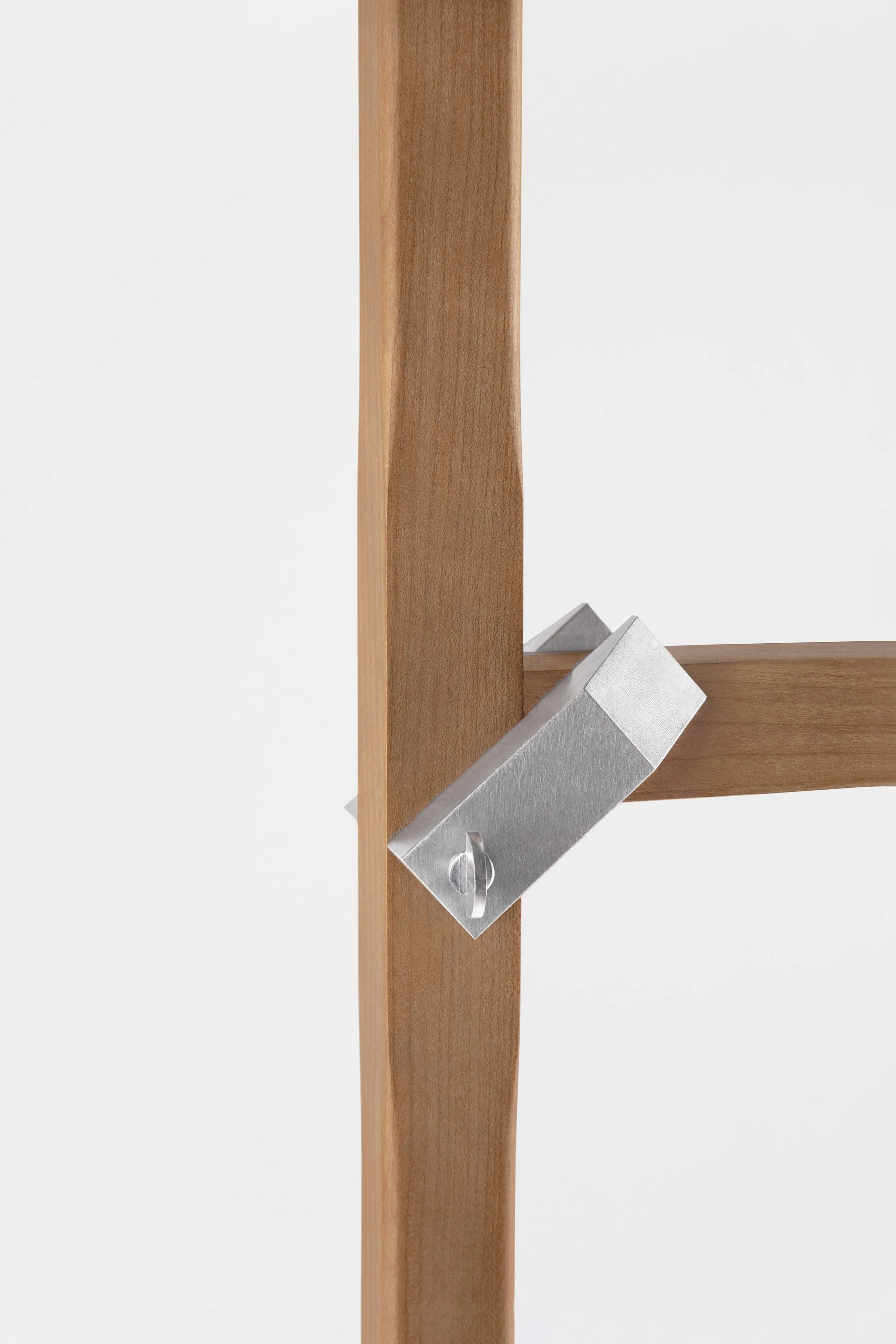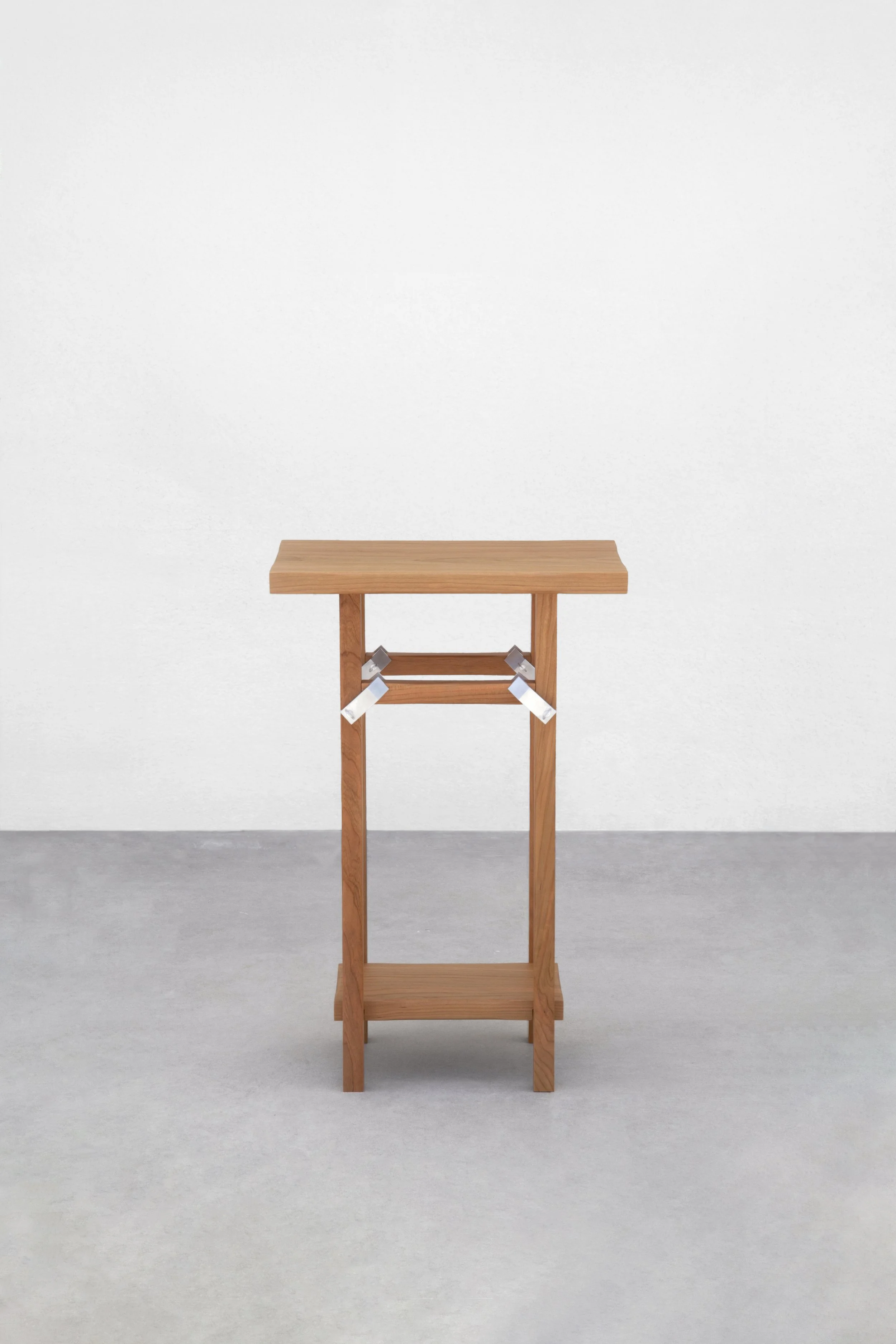Clamping Down on Furniture Waste
Defocus (image: Isabel Alonso).
In 2018, Isabel Alonso became fascinated with clamps.
Alonso, a Spanish designer and PhD candidate at London's Royal College of Art, had become interested in these often under-appreciated utilitarian objects when visiting craftspeople working across the city. “I was amazed by the variety of clamps that wood artisans used,” she says, having come across F-clamps, C-clamps, pipe clamps, parallel-jaw clamps, quick-action clamps, hand clamps, spring clamps, bench vices and more.
Alonso’s initial research was funded through a scholarship awarded by the “la Caixa” Foundation to undertake her masters in Design Products on the basis that her projects would explore the intersection of craft and design. This funding enabled studio visits, but her travels across the city also made her aware of something else. “I was astonished by the high amount of discarded furniture that I came across in London,” Alonso says. She began photographing and documenting every piece of abandoned furniture she found on pavements and roadsides – an archive of waste that she continues to expand to this day. “As a result of these experiences, I started to explore both clamps and long-lasting furniture in parallel,” says Alonso.
Components of the Defocus side table (image: Isabel Alonso).
The outcome is Defocus: a furniture collection that offers a merging, or indeed clamping together, of these two paths of interest in Alonso’s work. Comprising a side table, clothes butler and floor lamp, each of the furniture pieces can be simply assembled and disassembled using a series of small aluminium clamps designed by Alonso and custom made by a Spanish CNC specialist. Unlike other flatpack furniture, Defocus’s assembly needs no extra tools given that the tool itself becomes a feature of the furniture, the clamps’ matt-silver bodies sitting as charming accents against the cherry wood they hold together.
Clamps, in contrast to flat-pack furniture, have long lives, often being passed down through generations of makers or sold on second hand. Clamps are a workshop staple, highly valued and sturdy, which are designed to be used over and over, tightening and unscrewing around different objects and pieces across time without damaging them or leaving marks. As such, they make perfect sense for flat pack furniture which, as people move homes with increasing frequency, needs to be transportable. “Normally,” Alonso says, “the idea of flat-pack furniture is associated with industrial processes and low-quality pieces.” Seeking to challenge this association, Alonso set about “making artisanal furniture that comes in a flat pack and is generally convenient to own and transport.” Her aim was to create products that would address the 1.6m tonnes of bulky waste that is thrown away in the UK each year, around 42 per cent of which is furniture.
Detail of the clamping joint (image: Isabel Alonso).
Following her studies, Alonso moved back to Spain and worked on refining the Defocus pieces, sharpening and tweaking the designs to save material and manufacturing steps. Having worked with Juan Junca, a London-based artisan, to develop her initial prototypes, Alonso has since sought out collaborators in Spain. The final pieces are produced by two family-run businesses located in an industrial park in the city of Murcia, Alonso’s hometown: Pepe Muñoz, a craftsman and director of a bespoke wood furniture and interiors business, and Jerónimo Martínez who runs a metal processing company.
These craftspeople, Alonso stresses, are hugely important to Defocus and its ambition of minimising furniture waste. “Craftsmanship contributes to long-lasting furniture because of the high-quality of making and materials, along with the emotional connection that the handmade process can trigger.” It also aligns with Alonso’s intention to manage the small-scale production and distribution of the pieces, rather than industrially producing them. “The production process reconciles semi-industrial methods with craft processes and finishes, balancing time and material resources,” she explains.
Defocus side table (image: Isabel Alonso).
Alonso recently exhibited Defocus at Feria Hábitat València, an annual international furniture and lighting fair. The pieces were shown in the Nude (New Spanish Design) section of the fair, a space dedicated to emerging designers that has been running since 2002. It aims to highlight new talent, whilst also using the event to facilitate meetings between new designers and industry leaders exhibiting at the fair. For Alonso, she says the fair prompted useful conversations with interior designers and furniture collectors who showed interest in the pieces. Trade fairs may focus on large-scale industry, but programmes like Nude demonstrate that there is also value in designers pursuing different modes of production to participate in them.
Alonso’s use of the clamps as a furniture joint adds to a long and intriguing history of a modest, essential tool that was first documented in ancient Egyptian burial chambers. Through developing a clamp-based joint, Alonso marries more than pieces of wood together – she combines artisanal furniture with flat-pack ease to offer a new approach to the ever-mounting problem of furniture waste.




